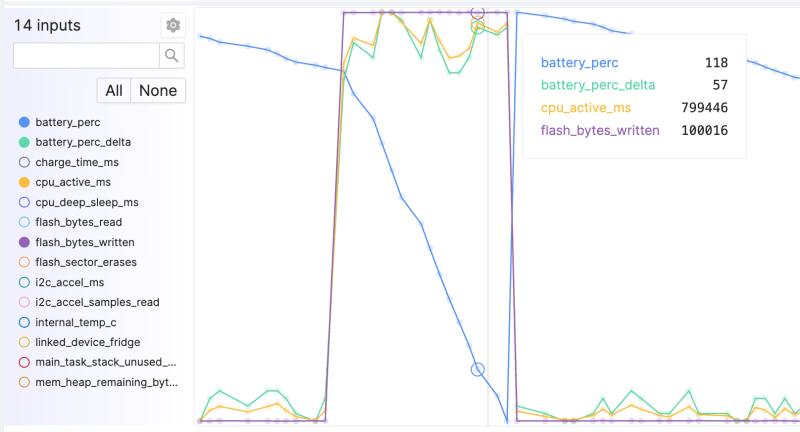There are all kinds of old wives’ tales surrounding proper battery use floating around in the popular culture. Things like needing to fully discharge a battery every so often, unplugging devices when they’re fully charged, or keeping batteries in the fridge are all examples that have some kernel of truth to them but often are improperly applied. If you really want to know the truth about a specific battery, its behavior, and its features, it helps to dig in and actually take some measurements directly like [Tyler] has done with a vast array of embedded batteries in IoT devices.
[Tyler] is a firmware engineer by trade, so he is deeply familiar with this type of small battery. Battery performance can change dramatically under all kinds of scenarios, most important among them being temperature. But even the same type of battery can behave differently to others that are otherwise identical, which is why it’s important to have metrics for the batteries themselves and be able to measure them to identify behaviors and possible problems. [Tyler] has a system of best practices in place for monitoring battery performance, especially after things like firmware upgrades since small software changes can often have a decent impact on battery performance.
While working with huge fleets of devices, [Tyler] outlines plenty of methods for working with batteries, deploying them, and making sure they’re working well for customers. A lot of it is extremely useful for other engineers looking to develop large-scale products like this but it’s also good knowledge to have for those of us rolling out our own one-off projects that will operate under battery power. After all, not caring for one’s lithium batteries can have disastrous consequences.
















Love that a deep-dive in battery performance optimization ends with “everything would be better if it were just plugged into the wall”. :)
If only commuter train has about 100 AC outlet per car for everyone with their phones, tablets, laptops, and gaming devices.
Yours don’t???
You have commuter trains??
Yes, but nobody uses them. They SUCK giant slimy donkey balls.
Of course some people will say the trains are fine, the community is broken.
F them and the bike they rode in on, right in the ear with a frayed brake cable.
I mean.
There’s this.
https://batteryuniversity.com/
“Battery don’t just die. They are murdered.”, we read.
Is the article is referencing only primary batteries? If so, the article should have covered the spreads of expected performance per a given ambient temperature. That would make it useful for designers of systems, where the over-riding principle is typically margin. I will not specify a battery where the manufacturer does not specify this ‘tolerance’.
If the article is intended to reference secondary batteries, then the principle affect of battery capacity and life per cycle count would be how the re-charge is controlled.
Nobody will ever read this sight to get specs or datasheets on anything, ever.
Would you?
A universal claim can be disproven with a single counterexample…. I am that counterexample. Of course, no engineer will take anything for granted, not even an actual manufacturer’s datasheet. People say that there are lies, damn lies, and statistics, but statistically speaking, datasheets are damn lies.
I had an R&D boss at a second tier consumer cell manufacturer put together a data sheet of discharge profile using the result on one prototype and label it “typical”.
Also the same guy who hired a new “engineer” (actually a BS chemist) to supervise me because “he was tall and looked good in a suit”.
I would not want to believe this but unfortunately I have worked enough with component manufacturers etc that I know really well when I am trying to lie to myself.